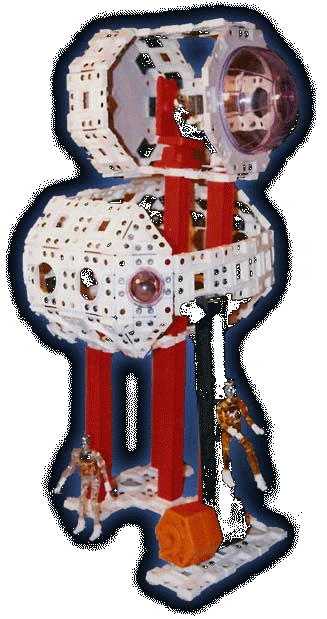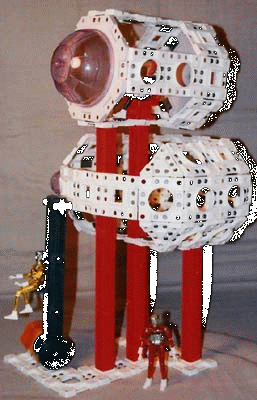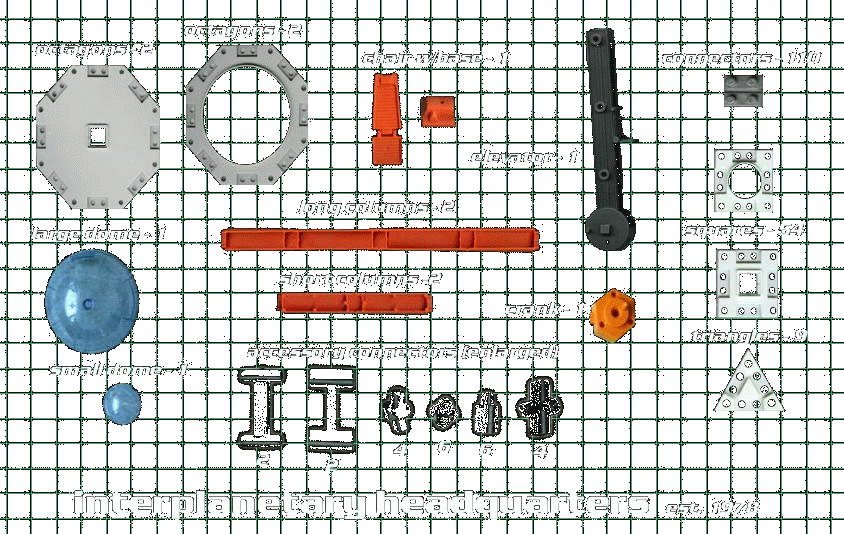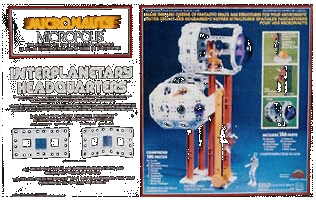

 |
"Micropolis,
the building set that never stops growing," read the Mego catalog. There
were 5 different Micropolis building sets released and the Interplanetary
Headquarters, or IPHQ, was one of them. Released in 1978 as a very large
boxed item, the city sets were designed to stimulate a childs creative
ability, and at the same time, make their fingertips very sore! Based
on the snap together building panels included with the Microman Build
Base play set, the Micropolis city sets could be assembled in any configuration
you could think up. The basic idea was to connect each panel with small
gray connectors and build structures that resembled the ones on the packaging.
Each set came with a large sized instruction sheet map that acted like
blue prints for each building section. You could lay each panel out on
the map, and then begin the arduous task of snapping each in onto each
connector. Each panel contained roughly 12 5mm holes, and had small recessed
surfaces to snap the square connectors into. The connectors had a small
bend in them, and contained 4 dimples. The bend allowed the connector
to fold over for corners or be rigid for walls, depending on which way
you attached it to the panel piece. This was the "exclusive snap-action
two-way Microhinge"!
|
|
The IPHQ contained 2 basic structures, a control room and dome tower. This particular set had 168 parts, and had these basic components: square panels, triangle panels, octagon panels, domes, chairs, and girders. The distinguishing feature of the IPHQ was the gray plastic elevator. The elevator came with a snap together crank that fit onto the side, and pulled up the chair with a string on the inside.
prototype as shown in pamphlet |
 |
|
The box photo shows a modified Stratastation elevator, and the Mego catalogs show even different red stair sections and yellow girders. But the Micropolis city sets went through even more drastic changes as shown in the Micronaut pamphlets released in 1977. The initial prototypes were shown, and then quickly changed in the pamphlets as they decided on a final design, undoubtedly to maximize repackaging the same parts as different sets. |

|
This use of repackaging was used for the figures as well, only they were in different colors. This set also included a small plastic accessory tree, which contained 22 different connectors. The Micropolis building sets did however look very cool and space aged when built, and were hours of fun…because they usually took hours to assemble! |
 |